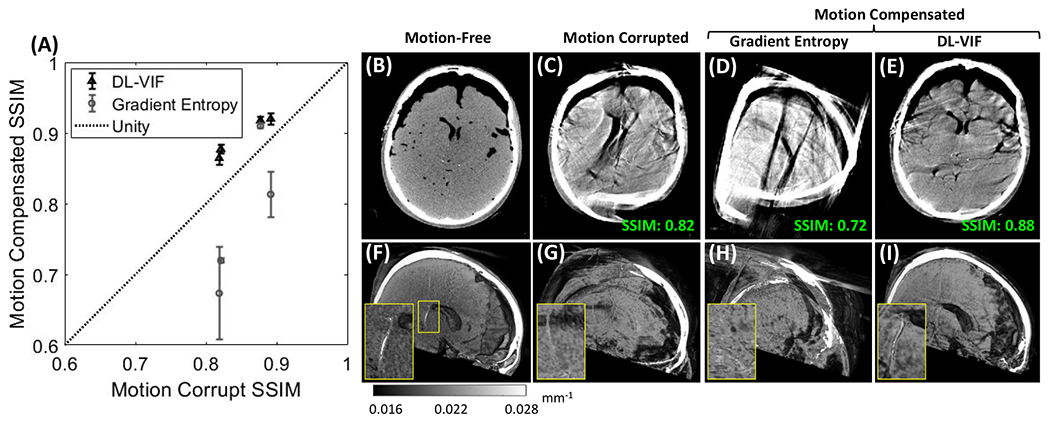Figure 9.

Motion compensation results with DL-VIF and gradient entropy in data of a cadaver specimen acquired on a clinical robotic C-arm. (A) Quantification of SSIM before and after motion compensation showed a net increase in SSIM values when using DL-VIF autofocus. The motion-free reference (B, F) showed conspicuous bony and soft-tissue anatomy and appropriate visualization of the intraventricular shunt (F, zoom-in). (C, G) Example motion-corrupted case showed severe distortion of bony and soft-tissue anatomy that challenged visibility of the shunt. (D, H) Motion compensation with gradient entropy for the example case resulted in net degradation of image quality compared to the uncompensated case. (E, I) Motion compensation using DL-VIF managed to recover most of the highly degraded soft tissue and bone features on the example case, allowing visualization of the shunt, as illustrated in the zoom-in window, and increased SSIM, pointing to a better agreement with the motion-free reference.
